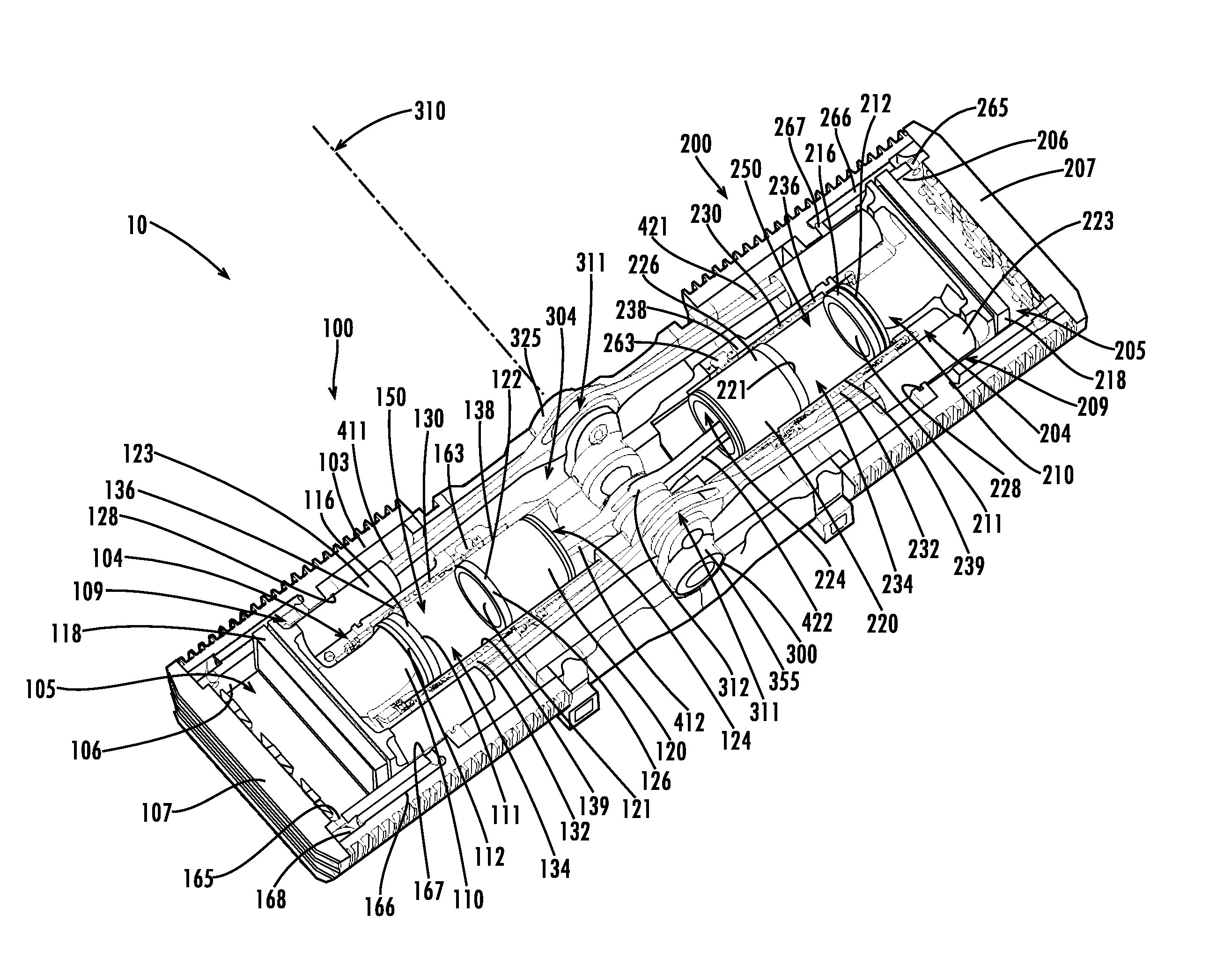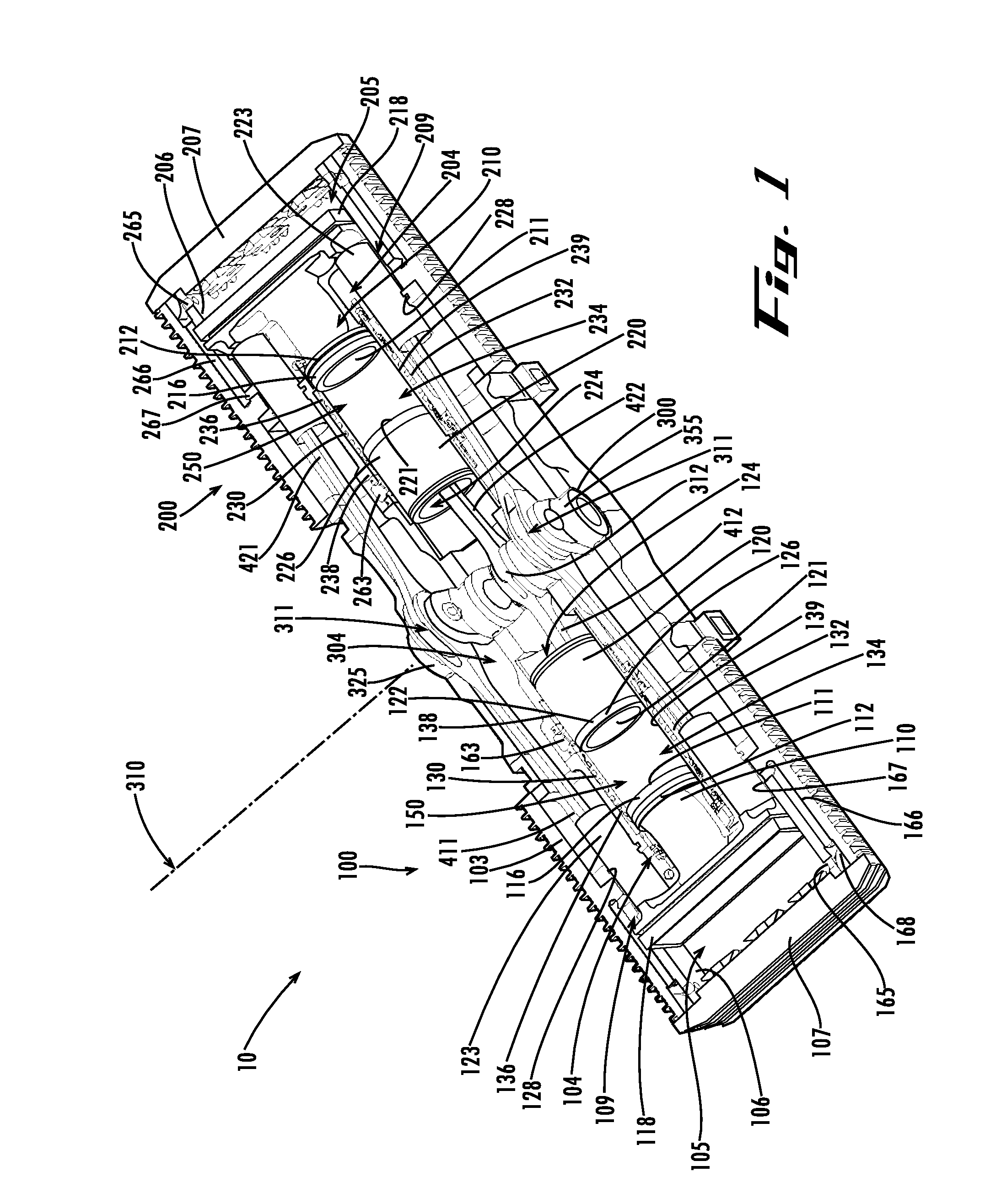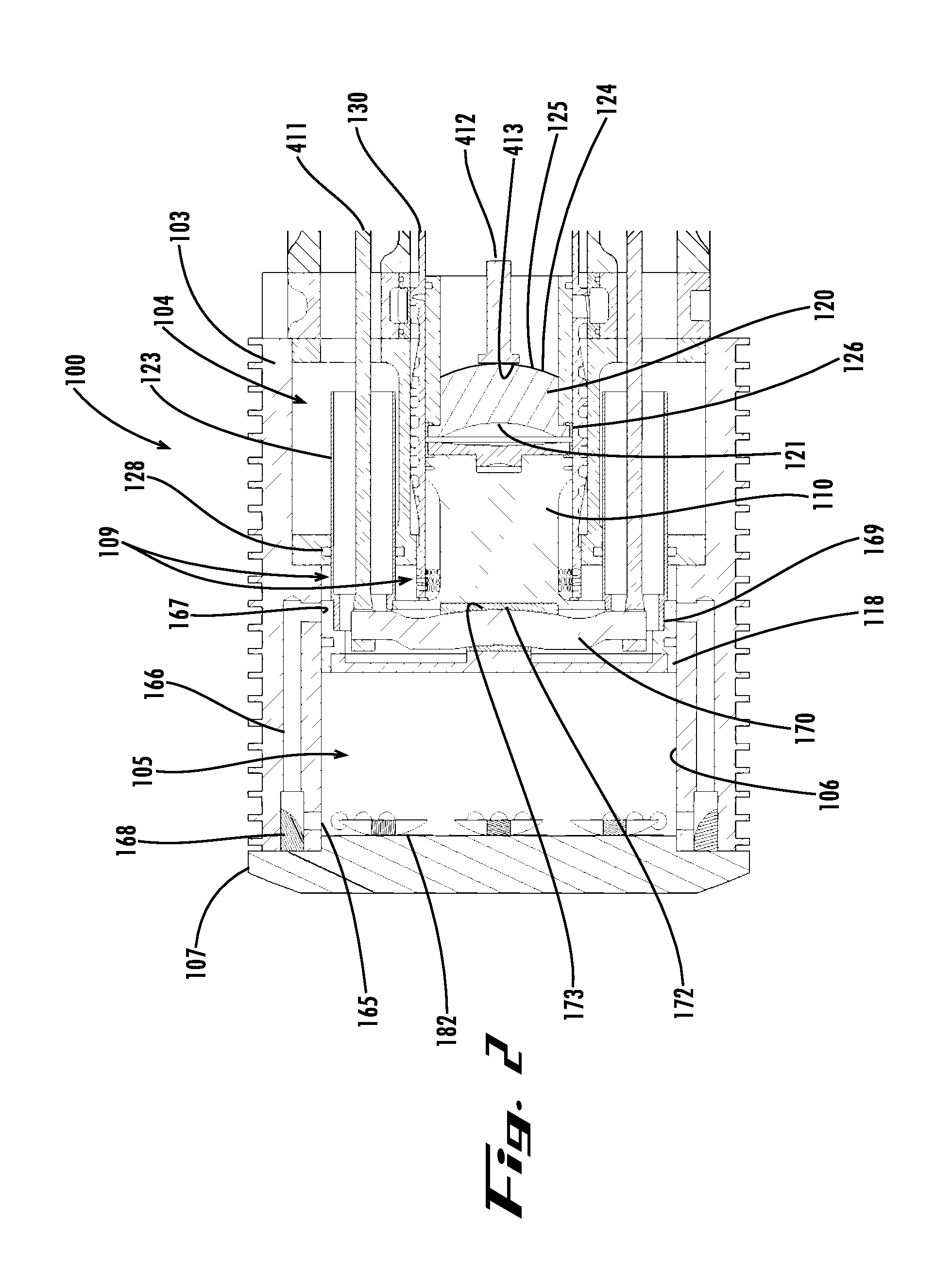Internal combustion engine
a technology of internal combustion engine and combustion chamber, which is applied in the direction of machines/engines, output power, oscillatory slide valves, etc., can solve the problems of limiting the designers' options on how the engine is placed within the vehicle, reducing the height profile, and reducing the weigh
- Summary
- Abstract
- Description
- Claims
- Application Information
AI Technical Summary
Benefits of technology
Problems solved by technology
Method used
Image
Examples
Embodiment Construction
[0053]In the following detailed description, reference is made to the accompanying drawings which form a part hereof wherein like numerals designate like parts throughout, and in which is shown by way of illustration specific embodiments in which the invention may be practiced. It is to be understood that other embodiments may be utilized and structural or logical changes may be made without departing from the scope of the present invention. Therefore, the following detailed description is not to be taken in a limiting sense, and the scope of the present invention is defined by the appended claims and their equivalents.
[0054]FIG. 1 is a partial cutaway isometric view of an engine 10 in accordance with an embodiment of the present invention. The engine 10 comprises a housing 103 containing a left cylinder 100, an axially aligned right cylinder 200 opposite the left cylinder 100, and a crankshaft 300 located there between. FIG. 1 depicts the engine 10 at a crankshaft angle of 0° or to...
PUM
 Login to View More
Login to View More Abstract
Description
Claims
Application Information
 Login to View More
Login to View More - R&D
- Intellectual Property
- Life Sciences
- Materials
- Tech Scout
- Unparalleled Data Quality
- Higher Quality Content
- 60% Fewer Hallucinations
Browse by: Latest US Patents, China's latest patents, Technical Efficacy Thesaurus, Application Domain, Technology Topic, Popular Technical Reports.
© 2025 PatSnap. All rights reserved.Legal|Privacy policy|Modern Slavery Act Transparency Statement|Sitemap|About US| Contact US: help@patsnap.com



